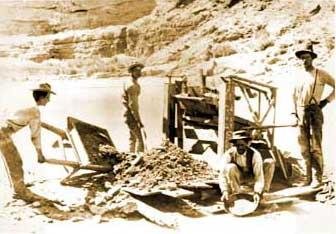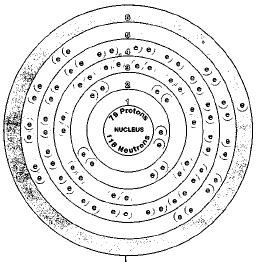Gold.
By: Hailee Moore

History of GOLD : Gold began solely as the first metal known, especially the most notable of all of the elements. The element of Gold was most intriguing because of it's lustrous color, giving it a shiny and attractive look. Because the color was as captivating as it was, it became a valuable element dating back to 4000 B.C. where it was used for decorations, jewelry, and fashion of that specific time period only available to the wealthy. Only in time does the element increase in value. Gold became imperative, leading everyone searching for it. It's demand caused many historical events that impacted today. In North Carolina in 1799, was the first documented finding of Gold in the U.S. The most popular was when the widespread of people fled to California from hearing word about Gold having been found, known as ' The Gold Rush of 1849.' Which had been influenced by James W. Marshall. Gold carries a wealthy significance to us. It doesn't react with many of the other elements, and despite it's beauty can be uninteresting. The only reason it's favored for currency out of the other elements is because it's " pretty. "

Gold mining along the San Juan River, 1894.

Felix Pedro's initial 1902 gold strike


California Gold Rush
Significance of Gold.
- Gold is a good conductor of heat and electricity.
- Gold is less chemically reactive than the other metals.
- It is very malleable.
- It can be edible, and eaten in food.
- Gold is used as a drug to treat a small number of
medical conditions. - Gold has been used to make ornamental objects
and jewelry.
- Because gold is highly valued and in very limited
supply it has long been used as a medium of exchange
or money. - The most important industrial use of gold is in the
manufacture of electronics. - Gold is known to have been used in dentistry as early
as 700 B.C.
Element Information
Element: Gold.
Density: 19.3 grams per cubic centimeter
Atomic Number: (number of protons in the nucleus): 79
Atomic Symbol: Au
Atomic Weight: (average mass of the atom): 196.9665
Density: 19.3 grams per cubic centimeter
Phase at Room Temperature: Solid
Melting Point: 1,947.7 degrees Fahrenheit
Boiling Point: 5,162 degrees F (2,850 degrees C)
Group/ Family: 11
Discovery of GOLD.
Discoverer: It is unknown who initially found gold.
Discovered: Gold usage dates back to 4000 B.C.
Country discovered: The initial place Gold was first
found is unknown, but Gold has been discovered in
every single continent.
Diagram of Gold atom.

Gold's square on the periodic table.

Includes Symbol, number of protons, atomic mass & proper name.
Sources:
http://www.chemicalelements.com/elements/au.html
http://facts.randomhistory.com/2009/03/09_gold.html